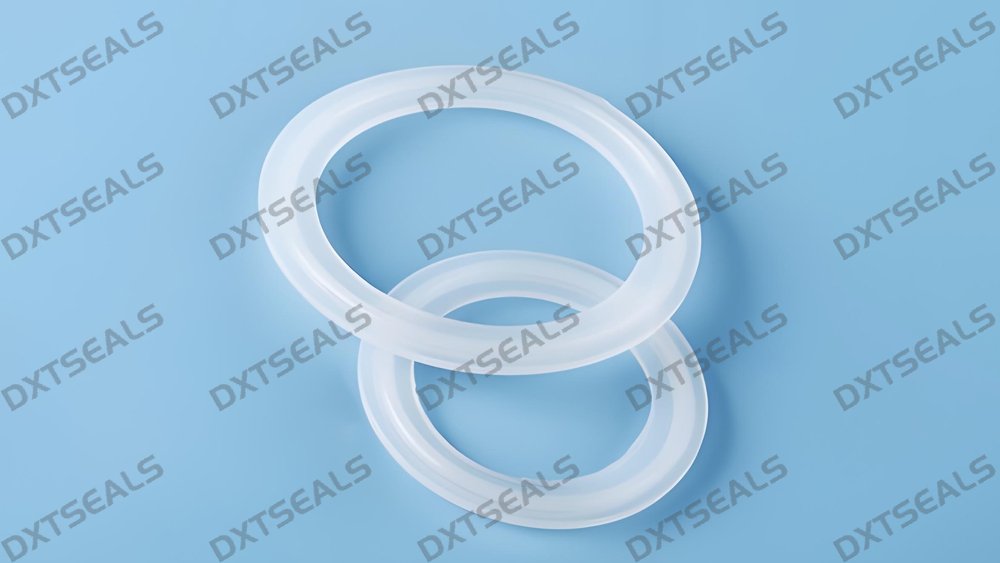
Choosing the right sealing material is a critical step in ensuring long-term equipment reliability. A single misstep in material selection—whether due to oversight, lack of data, or misjudged operating conditions—can lead to system failure, unplanned downtime, and even safety hazards.
In this article, DXTSEALS explores the common consequences of sealing material selection mistakes, identifies typical causes, and provides practical solutions to help engineers and procurement teams avoid costly errors.
⚠️ Common Consequences of Improper Seal Material Selection
1. Premature Seal Failure
Incompatible materials may degrade quickly under high temperature, pressure, or chemical exposure. For example, using NBR in a system with continuous exposure to steam will cause swelling and rapid degradation.
Result: Frequent maintenance, downtime, and replacement costs.
2. Fluid Leakage
A seal made from the wrong material may not withstand the media it's exposed to, leading to leakage of oil, water, chemicals, or gas.
Result: Environmental hazards, contamination, or operational inefficiency.
3. Loss of Compression Set Resistance
When the elastomer can’t recover its original shape, it loses its sealing function. This is often caused by high temperatures or over-compression, especially when the material is not rated for such conditions.
Result: Static seals lose their effectiveness, causing long-term failures.
4. Chemical Swelling or Softening
Exposure to aggressive chemicals can cause certain materials to swell, soften, or crack. For instance, EPDM performs well in water applications but fails in oil or hydrocarbon systems.
Result: Material breakdown, seal extrusion, or rapid wear.
5. Hardening and Brittleness
Some rubber materials, like NBR, harden when exposed to ozone or UV radiation, becoming brittle and prone to cracking.
Result: Seal fracture, leaks, and unexpected equipment downtime.
🧪 Examples of Incorrect vs. Correct Seal Material Choices
| Application | ❌ Wrong Choice | ✅ Better Alternative | Reason |
|---|---|---|---|
| Hydraulic Oil System | EPDM | NBR or HNBR | EPDM is not oil-resistant |
| Steam Valve | NBR | EPDM or FKM | NBR degrades under high temp & steam |
| Outdoor Electrical Enclosure | NBR | EPDM or VMQ | Better UV and ozone resistance |
| Food-Grade Pump | Standard FKM | FDA-Grade VMQ or EPDM | Non-toxic material required |
| Fuel Line | EPDM | FKM or HNBR | Fuel resistance is critical |
🛡️ How to Prevent Seal Material Selection Errors
✅ 1. Understand the Operating Conditions
Always confirm the temperature range, media compatibility, pressure, and movement (static or dynamic) before choosing a sealing material.
✅ 2. Refer to Compatibility Charts
Use industry-standard chemical compatibility charts to verify if your elastomer or plastic can safely contact the working fluid.
✅ 3. Use Application-Specific Materials
Choose materials tailored to your industry—for example, VMQ for food & pharma, HNBR for automotive, or PTFE for aggressive chemicals.
✅ 4. Consult with Seal Experts
Reach out to a trusted supplier like DXTSEALS for recommendations based on your operating environment and system needs.
✅ 5. Test Before Mass Production
If uncertain, prototyping or field testing can prevent large-scale failures down the line.
🧠 Bonus: Questions to Ask Before Choosing a Seal Material
-
What is the temperature range of the application?
-
Is the seal exposed to oil, water, steam, or chemicals?
-
Will the seal be under dynamic or static load?
-
What are the pressure and speed conditions?
-
Is compliance with FDA, NSF, or other standards needed?
🔚 Conclusion
Material selection may seem like a small detail, but in sealing applications, it can make or break the success of your system. Avoiding common mistakes by understanding the environment, evaluating chemical and mechanical properties, and consulting with experts can save time, money, and reputational damage.
At DXTSEALS, we offer a wide range of sealing solutions tailored for complex working conditions. From standard O-rings to custom-engineered PTFE, FKM, NBR, and EPDM seals, our experts help ensure you select the right material for long-term reliability.
👉 Contact us today for material recommendations, design support, or sample requests!
